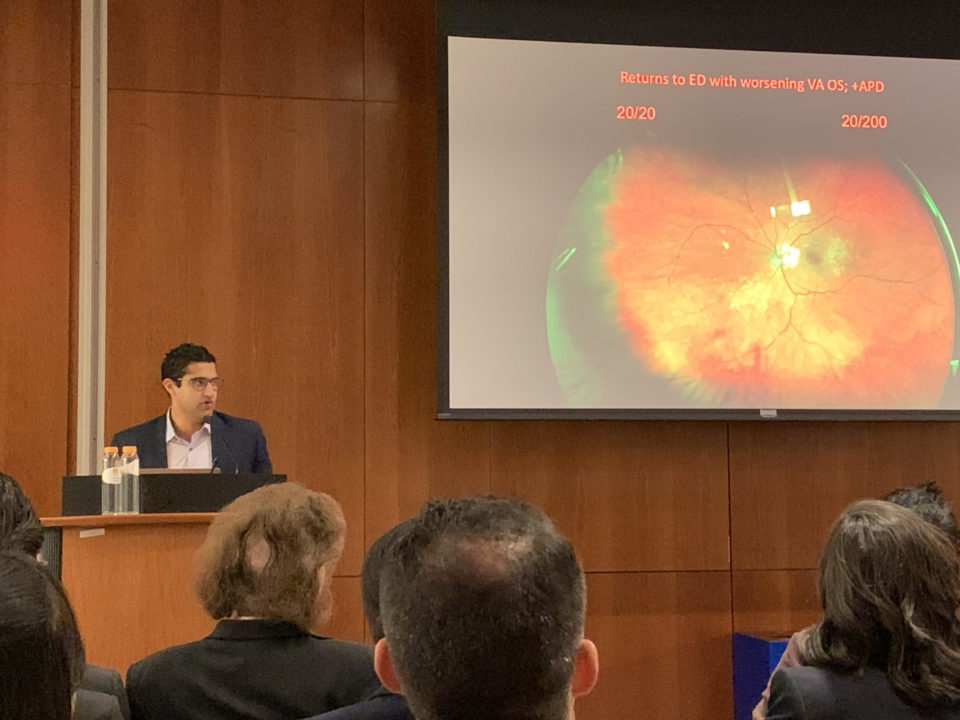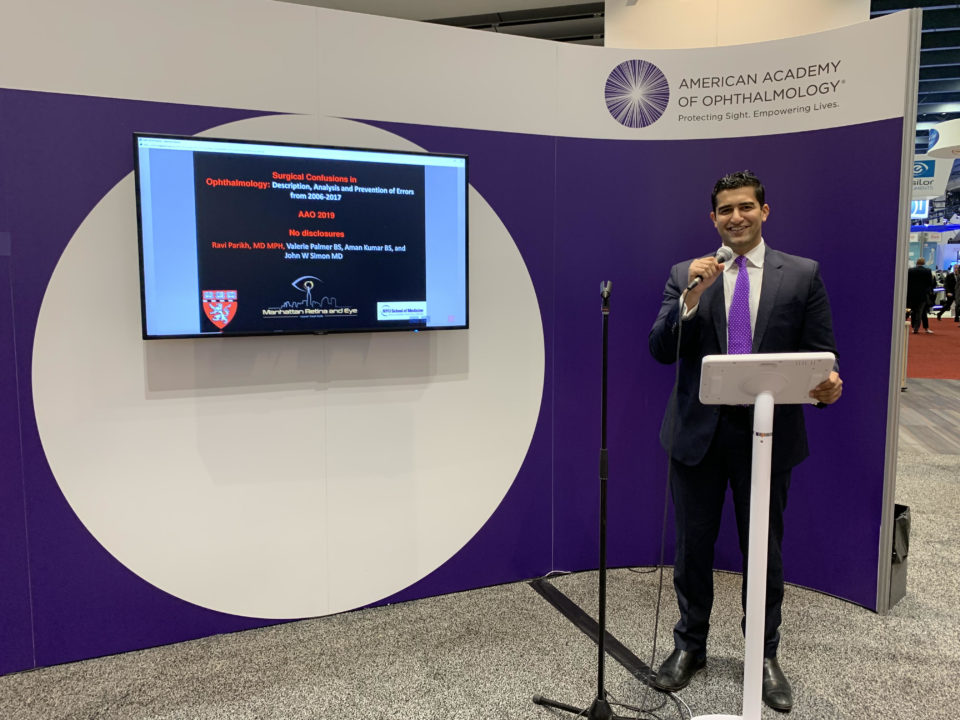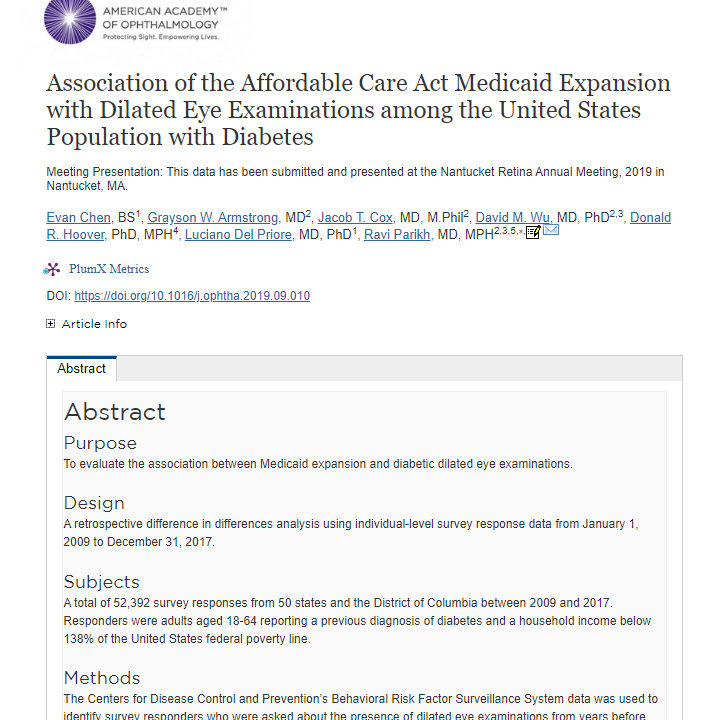
Furthering his studies in studying anti-VEGF injections
October 7, 2019
Dr. Ravi Parikh Interview
October 7, 2019Dr. Parikh recently reporting the higher than previously reported rates of patients with Dry AMD in one eye converting to Wet AMD (needing injections) in JAMA Ophthalmology (a leading clinical journal in the field) and demonstrating the importance of frequent monitoring for macular degeneration patients.
Importance Incidence of conversion to neovascular age-related macular degeneration (nAMD) in untreated fellow eyes of patients who are treated for nAMD in 1 eye with anti–vascular endothelial growth factor agents provides important prognostic information to clinically manage patients.
Objective To investigate the association of treatment assignment (intravitreal aflibercept vs ranibizumab) and baseline characteristics with fellow eye conversion to nAMD in the VEGF (Vascular Endothelial Growth Factor) Trap-Eye: Investigation of Efficacy and Safety in Wet AMD (VIEW) studies.
Design, Setting, and Participants This post hoc analysis of the VIEW 1 and VIEW 2 studies (randomized, double-masked, active-controlled, multicenter, 96-week, phase 3 trials comparing the efficacy and safety of intravitreal aflibercept in 2457 patients with treatment-naive eyes with nAMD) analyzed a subgroup of participants treated for nAMD in 1 eye who had untreated fellow eyes without neovascularization at baseline. All participants in the VIEW studies were included in 1 of 4 groups: ranibizumab, 0.5 mg, every 4 weeks; aflibercept, 2 mg, every 4 weeks; aflibercept, 0.5 mg, every 4 weeks; or aflibercept, 2 mg, every 8 weeks after 3 injections at 4-week intervals. Data collection in the VIEW studies occurred from July 2007 to August 2011; the data analysis presented in this report took place from April 2016 to November 2018.
Interventions Patients received no treatment in the fellow eyes unless after conversion to nAMD, when any treatment approved by heath authorities was given per the investigators’ discretion.
Main Outcomes and Measures Incidence of conversion to nAMD in patients with untreated fellow eyes that had not had clinical signs of neovascularization at baseline.
Results A total of 1561 participants were included in this analysis. At 96 weeks, 375 patients (24.0%) experienced cases of conversion to neovascular disease in the fellow eye, including 107 of the 399 individuals who received ranibizumab, 0.5 mg, every 4 weeks; 93 of the 387 individuals who received aflibercept, 2 mg, every 4 weeks; 84 of the 387 individuals who received aflibercept, 0.5 mg, every 4 weeks; and 91 of the 388 individuals who received aflibercept, 2 mg, every 8 weeks after 3 doses at 4-week intervals. The rates were 18.1, 16.2, 14.7, and 16.0 per 100 patient-years at risk at week 96, respectively. On multivariate analysis, fellow eye conversion was associated with increasing patient age (per 10 years) at baseline (hazard ratio [HR], 1.20 [95% CI, 1.05-1.36]), female sex (HR, 1.32 [95% CI, 1.06-1.63]), intraretinal fluid in the study eye at baseline (HR, 1.28 [95% CI, 1.02-1.61]), and increasing choroidal neovascularization lesion size (per 10 mm2) in the study eye at baseline (HR, 1.29 [95% CI, 1.06-1.57]). Rates of fellow eye conversion were similar with either of the treatments.
Conclusions and Relevance In this secondary analysis of randomized clinical trial data, patients with active nAMD in 1 eye appeared to have a high risk for fellow eye conversion. Such patients should be monitored closely.
Related posts







